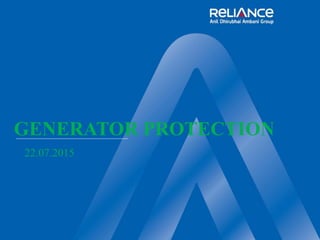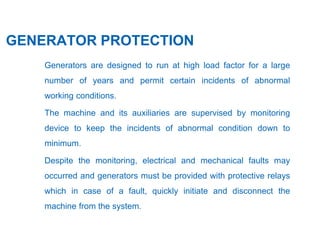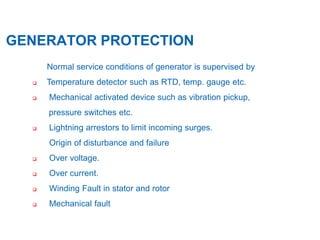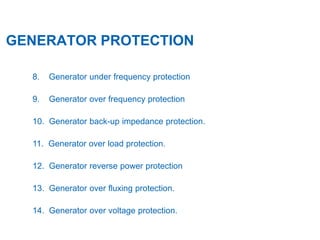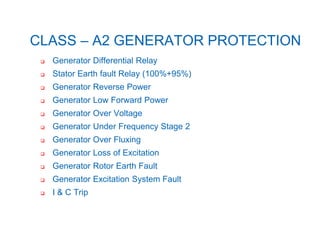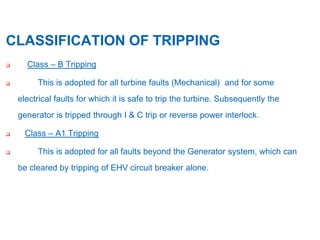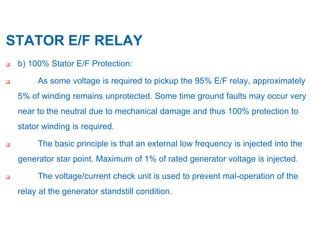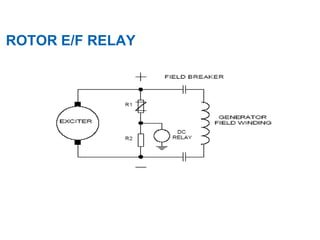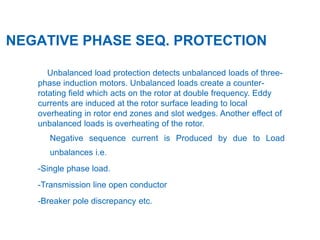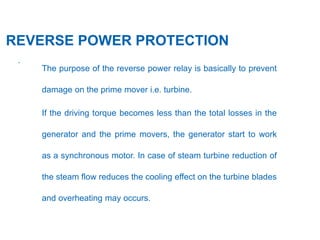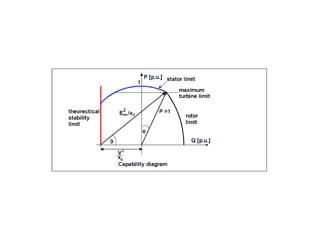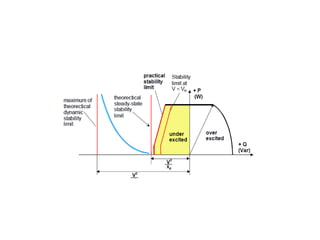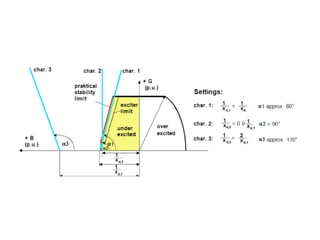Generators and their protection systems are designed to operate reliably over many years while withstanding some abnormal operating conditions. Monitoring devices supervise the machine and auxiliaries to minimize abnormal incidents. Despite monitoring, electrical and mechanical faults can still occur, so generators are equipped with protective relays to quickly disconnect the machine from the system if a fault is detected. Protection systems include devices that monitor temperature, vibration, pressure, and lightning arrestors, as well as relays that detect over voltage, over current, winding faults, mechanical faults, and other conditions. Relays provide protection for the stator, rotor, differential currents, negative phase sequences, loss of excitation, out of step conditions, and other faults. Protection schemes are classified based on
